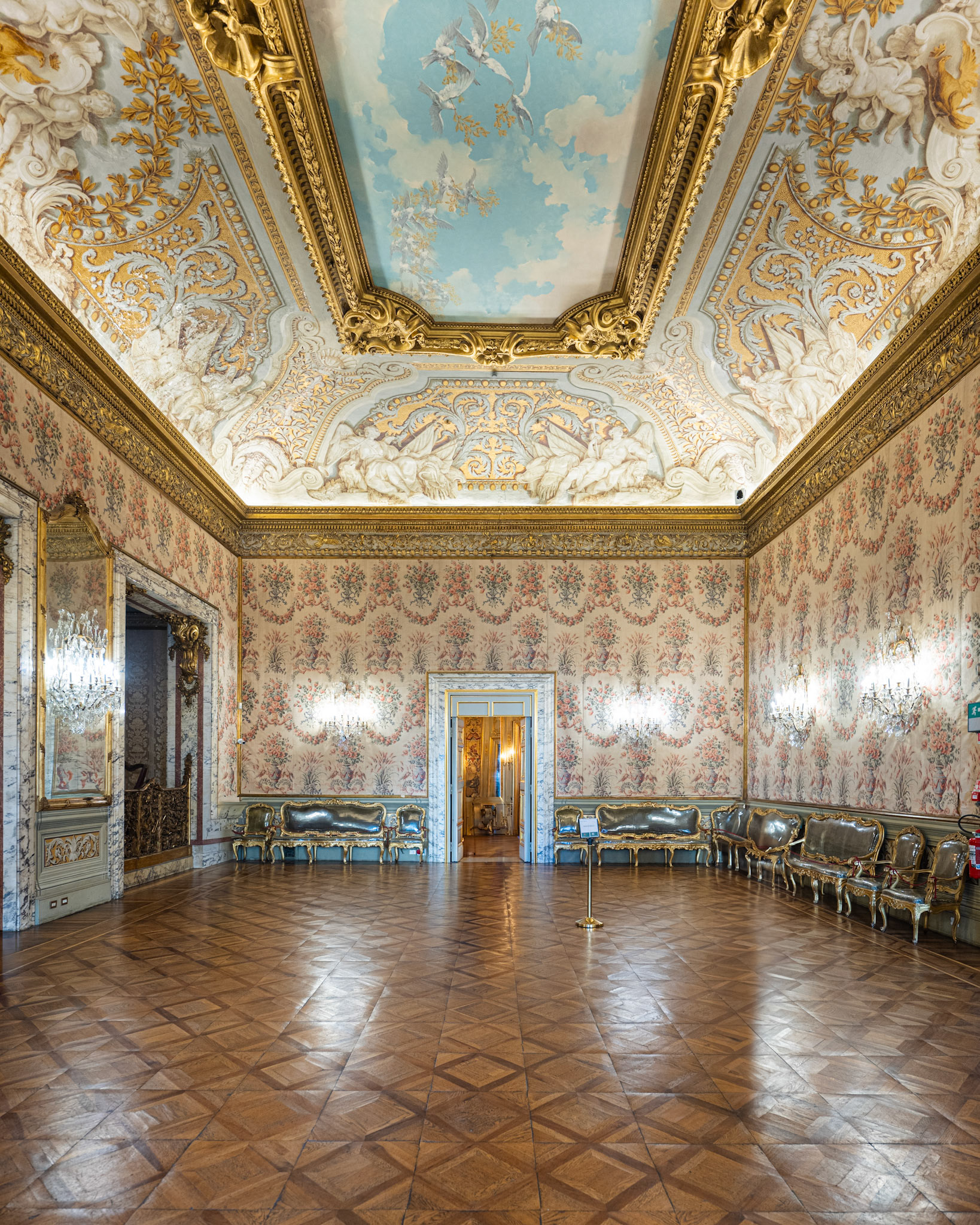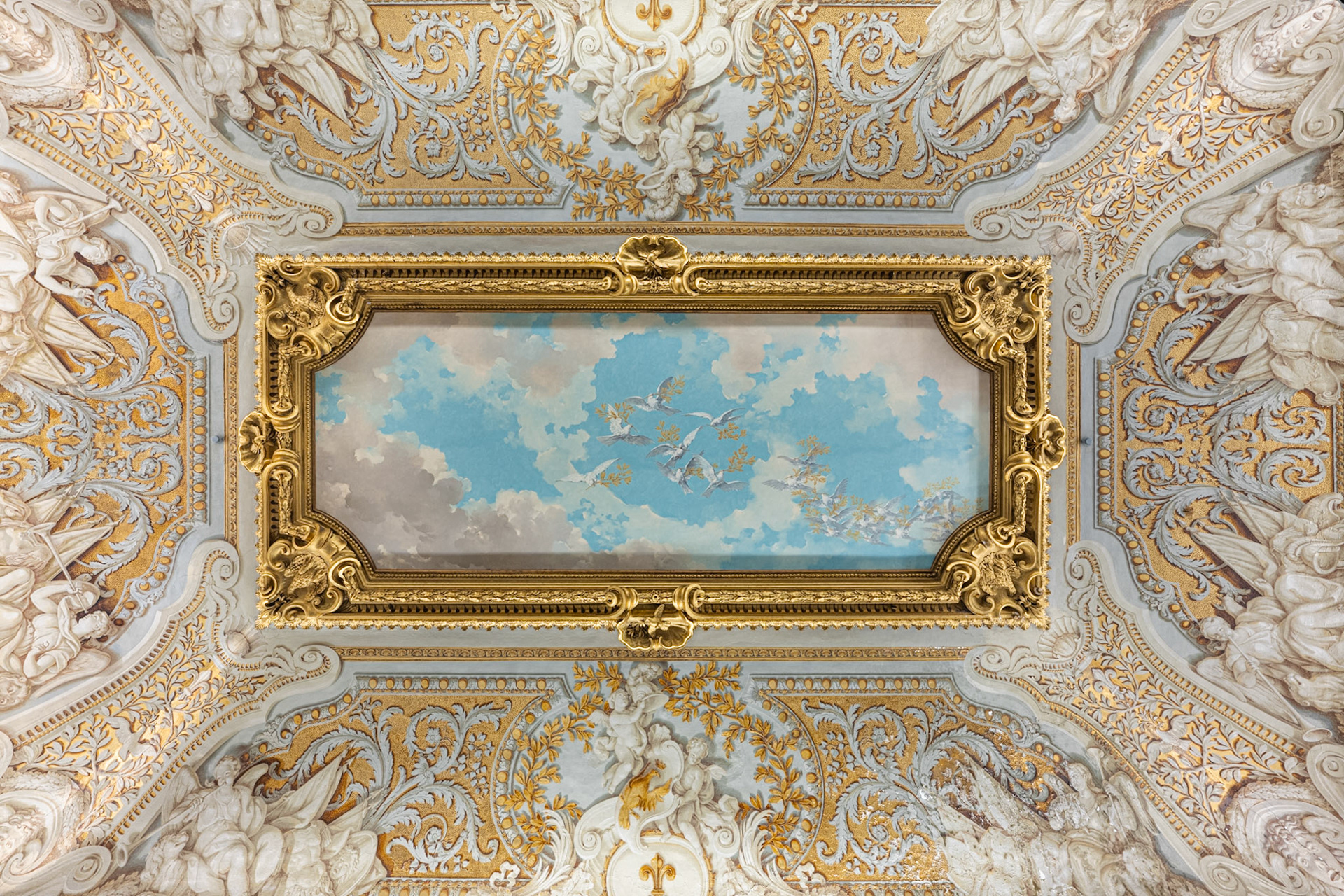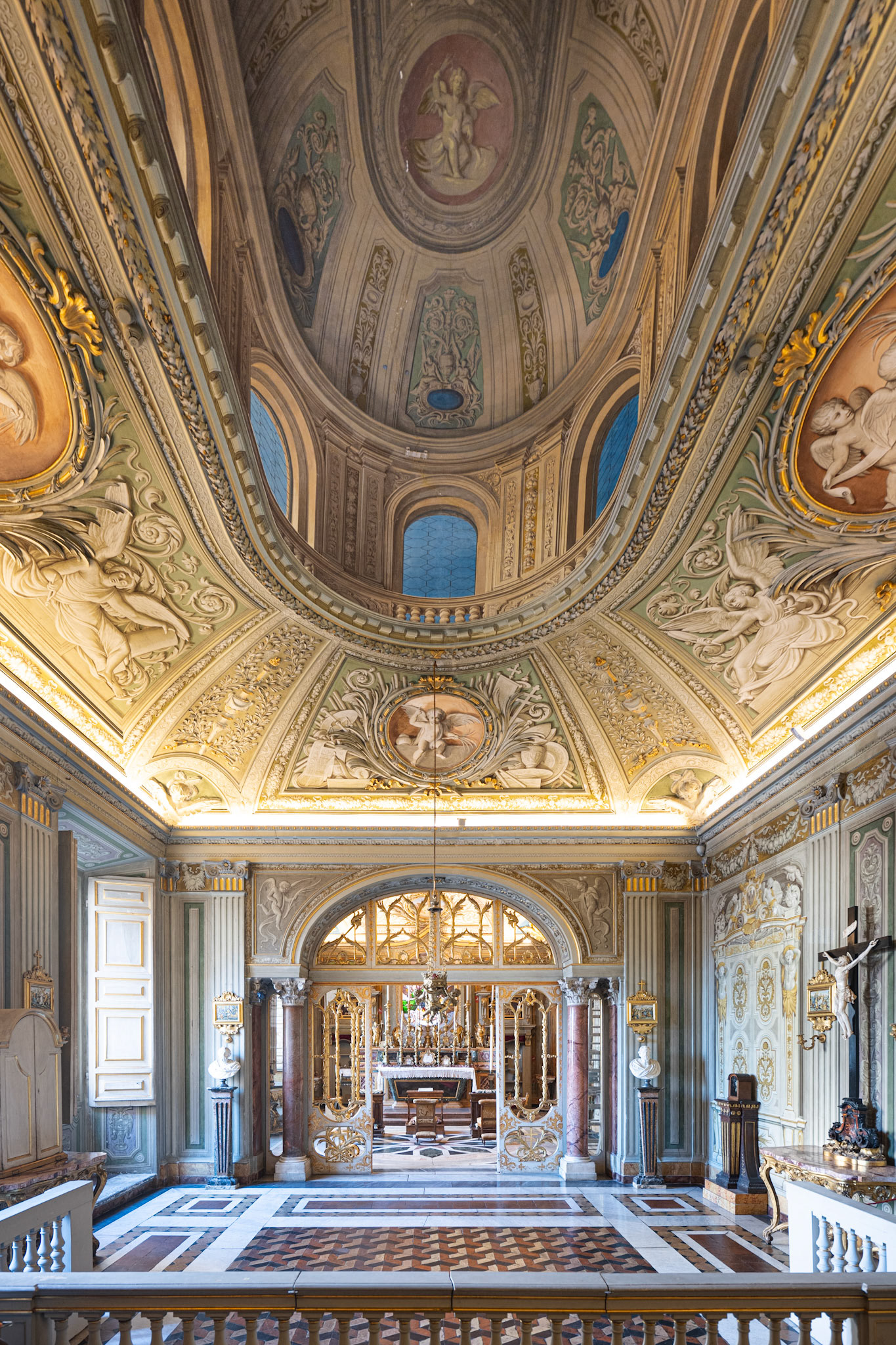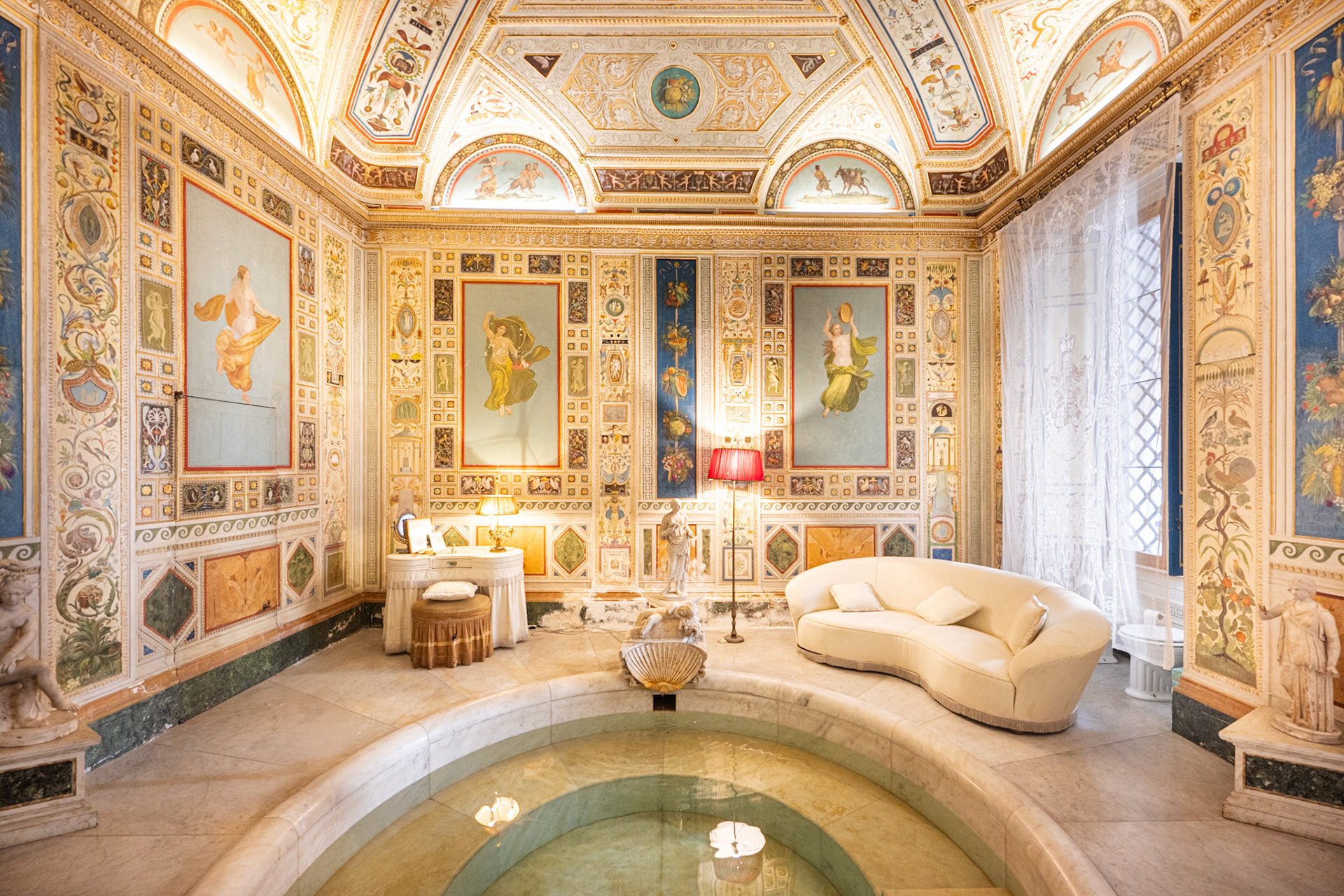Galleria Doria Pamphilj is located within the Palazzo Doria Pamphilj on Via del Corso in Rome. The origins of the Palazzo Doria Pamphilj date back to the 15th century, but the structure was significantly expanded and remodeled in the 17th century after the marriage of Camillo Pamphilj, nephew of Pope Innocent X, to Olimpia Aldobrandini. Under Camillo’s direction, the palazzo became a showcase for the family’s growing art collection. The palace underwent further renovations in the 18th century under the guidance of architect Carlo Fontana, who refined its Baroque design.
Galleria degli Specchi
The most notable space is the Gallery of Mirrors (Galleria degli Specchi), inspired by the Hall of Mirrors at Versailles. Designed in the 1730s, the room features gilded stucco and Venetian glass mirrors that create an illusion of endless space and light. Its ceiling frescoes were created by Aureliano Milani between 1731 and 1734 and show the Labours of Hercules.

Galleria Doria Pamphilj - Galleria degli Specchi
Ballroom
The Ballroom, formerly known as the "Music Room," consists of two interconnected spaces. It was completely renovated in the late 19th century by Andrea Busiri Vici.

Ballroom

Ballroom - ceiling
Chapel
The plans for the chapel were created by Carlo Fontana between 1689 and 1691. The ceiling of the Antechapel features a trompe-l'œil decoration that masterfully creates the illusion of a dome.

Galleria Doria Pamphilj - chapel
The Private Pamphilj Apartments
Beyond the splendor of the gallery, the private Pamphilj Apartments offer an extraordinary glimpse into the daily lives of Roman nobility. One of the most remarkable features is the Pompeian-style bathroom-alcove, known as Il Bagno di Diana (Diana’s Bath), commissioned in 1840 by Prince Filippo Andrea as a gift to his wife, Mary Talbot. This small, frescoed room, decorated with grotesque motifs and imagery of the four seasons, evokes a mythological ambiance. At its center is a stunning white marble shell-shaped bath dedicated to the goddess Diana, surrounded by antique statues in the corners.

Il Bagno di Diana, 1840
You may also like